Showing 169–180 of 250 results

The worship of Shakti (Mother Goddess) is almost a universal phenomenon and its manifestation is seen in different forms. This book incorporates a number of papers on multiple aspects of øàkta traditions practised in Varanasi continuing from hoary past to-date.
The worship of Shakti (mother Goddess) is almost a universal phenomenon and its manifestation is seen in different forms. Indian contribution has also been laudable and it is amply noticed through the figures of Mother-Goddesses even from the pre-Indus Culture. This was followed in the subsequent ages throughout India, and Varanasi being a great religious centre has also left an indelible imprint in this regard. This book incorporates a good number of papers on multiple aspects of Shakta traditions practised in Varanasi continuing from hoary past to-date. Beside philosophical, religious and cultural leanings the contents expose the iconographic, ritualistic and artistic rendering of the Divine Mother. Kashi or Varanasi has been a stronghold of religious and spiritual fervour; and several religious sects have contributed to its present texture. Saktism has also been a forceful current in the cultural stream of this holy city. This is evidenced by several Devi temples, Shakti-pithas, yantras, fairs and festivals associated with the worship of Mother-Goddess.

This study, in an ethono-historical perspective, explores the multi linear evolution of Sakti worship in Orissa: from the pre-/protohistorical times to the late medieval epoch, and its continuity into the modern period with contextual focus on its probable genesis, historical development, festivals, ritualistic patterns, and cultural sources including myths, legends and folklore.
In the Hindu world-view, Shakti is the Mother of the Universe: the highest primal power. She is, accordingly, the all-pervading, intagible energy principle that propels the cosmos and its endless human dimensions with the life-throbs of activity and culture. Many are her songs, countless her stories, numerous her names. Worship of Shakti, as a pan-Indian phenomenon, predates Sanskritic influences of every kind. Combining his extensive fieldwork with diverse published and unpublished sources: archaeological, historical and religious, Francesco Brighentis study traces its presence in Orissa. Which, perhaps, provides the best paradigm of an age-old Goddess cult, deeply rooted in the autochthonous religious traditions of Eastern India. It is the first, all-encompassing study, in an ethono-historical perspective, exploring the multilinear evolution of Shakti worship in Orissa: from the pre-/proto- historical times to the late medieval epoch, and even its continuity into the modern period with contextual focus on its probable genesis, historical development, festivals, ritualistic patterns, and cultural sources including myths, legends and folklore. The book also incorporates, besides a description of important Shakta centres in Orissa, a study of the Divine Mothers iconographic features in Her multifarious manifestations. Together with around hundred illustrations highlighting the varied representations of Shakti in sculpture, this study will interest not only the scholars of archaeology, history and religion, but historians of art as well.
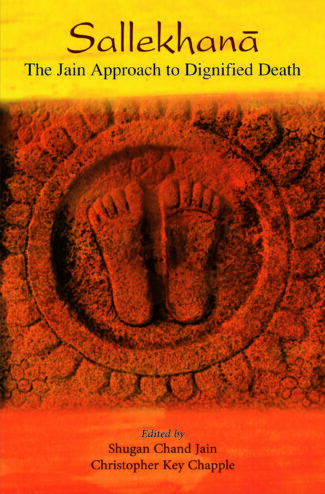
Jainism regards life to be eternal. Recognizing that the soul can never die, but merely takes a new body, a careful tradition welcoming death through intentional fasting developed more than two thousand years ago. A legal challenge Rajasthan was put forward in 2013, suggesting that this practice is harmful and coercive and targets women in particular. For a short while SallekhanÀ, which means the thinning of existence, was declared illegal. In response to this controversy, three conferences were convened by the International School for Jain Studies to explore the legal, religious, and medical aspects of this practice. Experts discussed the long history of the practice, attested to in epigraphs throughout India; the ways in which fasting to death has become an acceptable practice in the Western world; and contemporary instances of its observance in India. This volume presents an interdisciplinary approach to thinking about the end of life, from biomedical, historical, religious, and legal perspectives.
Jainism regards life to be eternal. Recognizing that the soul can never die, but merely takes a new body, a careful tradition welcoming death through intentional fasting developed more than two thousand years ago. A legal challenge Rajasthan was put forward in 2013, suggesting that this practice is harmful and coercive and targets women in particular. For a short while Sallekhanā, which means the “thinning of existence,” was declared illegal. In response to this controversy, three conferences were convened by the International School for Jain Studies to explore the legal, religious, and medical aspects of this practice. Experts discussed the long history of the practice, attested to in epigraphs throughout India; the ways in which fasting to death has become an acceptable practice in the Western world; and contemporary instances of its observance in India. This volume presents an interdisciplinary approach to thinking about the end of life, from biomedical, historical, religious, and legal perspectives.
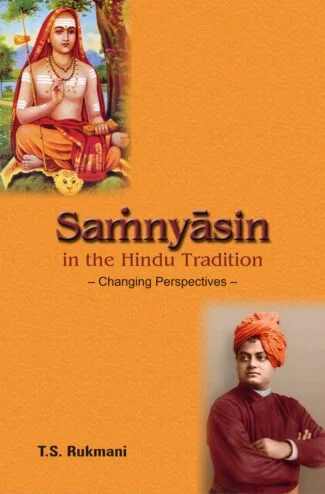
This book tries to look at samnyasins and the samnyasashrama in their long existence from the times of Shankara to the present day and also throws light on how scholars, common people, as well as the samnyasins themselves view their roles, both as individual personalities and as persons living in an institution relating to society as a whole.
The present book, Samnyasins in the Hindu Tradition: Changing Perspectives, covers a wide territory, trying to look at the samnyasins and the samnyasashrama in their long existence from the times of Shankara to the present day. This book traverses a slightly different trajectory from the usual book on samnyasins as it attempts an overview of the samnyasin and the institution over a long period from Vedic to post-Independence times and speculates on the future of the institution as well. Samnyasins and scholars not only from India, but from countries as diverse as Canada, South Africa, UK and USA also figure in this collection. The samnyasashramas covered also range from the traditional Advaita, Vishishthadvaita and Dvaita to include many more later ashrams such as the Vira Shaiva (Lingayat), Dharmapuram Adheenam, Arya Samaj, Shivananda Ashram, Ramakrishna Mission, Swami Narayan and many others. Another departure from other books on the subject is that it also compares institutions like the Ramakrishna Mission for instance, as they function in India and in foreign countries where they have established ashrams. In the midst of varied opinions regarding the samnyasin and the samnyasashrama this book will throw light on how scholars, common people, as well as the samnyasins themselves view their roles, both as individual personalities and as persons living in an institution relating to society as a whole.
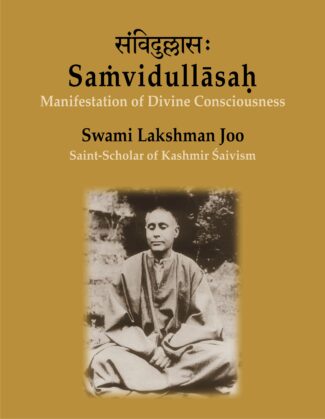
This volume is a Birth Centenary tribute to Swami Lakshman Joo Raina (1907-1991), a great saint and scholar of Kashmir, who revived the tradition of Kashmir Shaivism. The articles by scholars, disciples and devotees reflect on his life and work, and on his spiritual influence.
Swami Lakshman Joo Raina, also called Lakshman Brahmacarin and Ishvara Svarupa (1907Ý1991) was one of the greatest saints of 20th century India, who was at the same time an extraordinary scholar who relived and revived the almost forgotten tradition of Kashmir Shaivism. His high spiritual state was matched by his profound knowledge of the Shaiva scriptures and of the great thinkers and commentators of the tradition Þ Abhinavagupta, Kshemaraja and others. Swami Lakshman Joo lived a secluded life in his ashram in Kashmir, but he taught the texts of Kashmir Shaivism to Pandits and scholars from different countries, besides giving spiritual guidance to a number of seekers and disciples. On the occasion of his Birth Centenary, a volume in his memory is being brought out containing articles by scholar-disciples, devotees and relatives which throw light on the extraordinary life of this saint and on his contribution to reviving and continuing the tradition of Kashmir Shaivism. Articles on his life by his close disciple Prabha Devi and his scholar-disciples Jaideva Singh and Jankinath Kaul `Kamal’, an exhaustive article on his place in the Kashmirian Shaiva tradition by Professor Alexis Sanderson of Oxford, to mention only a few, provide an insight into his saintly personality and his great qualities as a teacher. Even scholars and seekers who have never met him and have been deeply influenced by his spiritual presence have contributed an account of their experience. The volume is richly illustrated by historical photographs which provide a visual testimony of the life of Swami Lakshman Joo. A list of his published works is an important complement.

This volume is a Birth Centenary tribute to Swami Lakshman Joo Raina (1907-1991), a great saint and scholar of Kashmir, who revived the tradition of Kashmir Shaivism. The articles by scholars, disciples and devotees reflect on his life and work, and on his spiritual influence.
Swami Lakshman Joo Raina, also called Lakshman Brahmacarin and Ishvara Svarupa (1907Ý1991) was one of the greatest saints of 20th century India, who was at the same time an extraordinary scholar who relived and revived the almost forgotten tradition of Kashmir Shaivism. His high spiritual state was matched by his profound knowledge of the Shaiva scriptures and of the great thinkers and commentators of the tradition Þ Abhinavagupta, Kshemaraja and others. Swami Lakshman Joo lived a secluded life in his ashram in Kashmir, but he taught the texts of Kashmir Shaivism to Pandits and scholars from different countries, besides giving spiritual guidance to a number of seekers and disciples. On the occasion of his Birth Centenary, a volume in his memory is being brought out containing articles by scholar-disciples, devotees and relatives which throw light on the extraordinary life of this saint and on his contribution to reviving and continuing the tradition of Kashmir Shaivism. Articles on his life by his close disciple Prabha Devi and his scholar-disciples Jaideva Singh and Jankinath Kaul `Kamal’, an exhaustive article on his place in the Kashmirian Shaiva tradition by Professor Alexis Sanderson of Oxford, to mention only a few, provide an insight into his saintly personality and his great qualities as a teacher. Even scholars and seekers who have never met him and have been deeply influenced by his spiritual presence have contributed an account of their experience. The volume is richly illustrated by historical photographs which provide a visual testimony of the life of Swami Lakshman Joo. A list of his published works is an important complement.

In the past many Sanskrit works were translated into Persian and other Indian languages so as to reveal the glory of the Sanskrit language and its literary output. This book presents details of the Urdu translations covering the Vedic literature the Puranas and classical works on various subjects.
Sanskrit literature is a vast tradition, its literary activity being one of the oldest in the world. In the past, many Sanskrit works were translated into Persian and other Indian languages so as to reveal the glory of the Sanskrit language and literary output to all. This book is an attempt to present Urdu translations of Sanskrit literature. The translations include the Gayatri mantra and a few random lines/verses from the Arthashastra, the epic literature especially the Bhagavad Gita, Kalidasas plays, Bahrtrharis Shatakas, the Yoga Darshana of Patanjali and the Kapila Sutras on Sankhya philosophy, in a simple manner and with clarity. It includes a detailed list of various works of Sanskrit translations into Urdu covering the Vedic literature, the Puranas, Sanskrit classical literature like the epics, drama, lyrics, poetry, prose, romance, popular tales and scientific literature on grammar, phonetics, medicine, the law, astronomy and mathematics.

The book employs the multi-disciplinary methodologies of art historical interpretation to contextualise nearly the whole range of Saptamatrka icons within the larger historical evolution of accultured Brahmanical religion, mythology, theology and cultic developments.
The worship of Saptamatrika; the seven Mother Goddesses (or the seven Saktis, the divine feminine powers), is over a millennia and half old, pan-Indian phenomenon. And, over the centuries, the Matrika concept has come to have varied ideational, literary, visual and ritualistic manifestations which not just interconnect the totality of Brahmanical and non-Brahmanical religious traditions, but are integral components of the diverse historical processes of Indian society. A reputed scholar of art history here offers an insightful iconological study of Saptamatrika divinities: the Brahmanical goddesses found invariably as a single collective whole, consisting literally of seven (though sometimes eight or more) female deities, variably accompanied by different forms of Shiva, and Ganesha or Skanda. Employing the multidisciplinary methodo-logies of art historical interpretation, including the recent feminist interventions, Dr. Panikkars inquiry contextualises nearly the whole range of Saptamatrika icons within the larger historical evolution of accultured Brahmanical religion, mythology, theology and concomitant multifarious cultic developments. Also clarifying some of the basic principles of Brahmanical iconic tradition, his study has, for the first time, exceeded the accepted Art Historical procedures by incorporating the questions of class conflict, gender representations and ideology within the iconological discourse and has, thus, advanced the frontiers of Art Historical practice. It is a compelling, painstakingly researched work growing from the authors indepth survey of diverse Saptamatrika sculptures and an astonishing mass of both primary textual sources and research publications of more recent years. And, yet more significantly, it is enlivened with exquisite visual material: comprising nearly 200 photographic reproductions.

It is a comprehensive study of the life and works of Sayyid Abul ÿasan `Ali Nadwã, an important scholar of his time with significant contribution to contemporary Islamic thought, discussing his major writings concerned with the themes like primacy of the Qur’àn and the sunnah as harbingers of world civilisation.
The volume presents a comprehensive study of the life and works of Sayyid Abul Hasan Ali Nadwi (1913-1999). Sayyid Abul Hasan Ali Nadwi is seen as an important scholar in the modern Islamic resurgence who has made significant contributions to contemporary Islamic thought. He was one of the few Indian ulama to have taken seriously the dynamic role of Islam in a multi-religious society. The book discusses the early life, family and education of the scholar and his major writings that are concerned with the themes of the primacy of the Quran and the sunnah as harbingers of world civilisation, ishlah (reform) and tajdid (revival) as anchors of Islamic resurgence, the methodological approach of dawah, Islam and the West, and Islamic order in an Indian setting. With quotations and references from published translations of his Urdu and Arabic works including his autobiography, it details the importance of his coherent approach to the diversity of issues in the twentieth century and the importance of his autobiography Karwan in this context. It deals with his participative role in the Indian mainstream activities, examining the social and spiritual crises facing Muslims. With an overview of contemporary Islamic movements, it takes up his relationship with and contribution to the Tabligh Jamaat, a global movement founded by Mawlana Ilyas noted for its reformist trends.
The book will undoubtedly be of interest to scholars and students of Islamic studies.
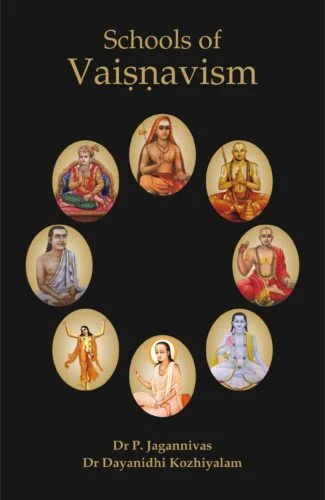
The book provides a detailed study of the Vaisnava acaryas such as Sri Ramanuja, Sri Nimbarka, Sri Madhvacarya, Sri Caitanya, Sri Vallabha, Sri Sankaradeva and Sri Swami Narayana and their religious philosophies vis-à-vis Sri Sankara’s jnana theory.
The book provides a detailed study of the acaryas such as Sri Sankara, Sri Ramanuja, Sri Nimbarka, Sri Madhvacarya, Sri Caitanya, Sri Vallabha, Sri Sankaradeva and Sri Swami Narayana and their philosophies. The schools of Vaisnavism belonging to these venerable acaryas primarily promulgate for the seeker an alternate method which emphasizes that samsara is real, liberation is real, and worship and meditation are equally real, not mock battles. God is accepted as the Ultimate Reality – merciful and gracious, the seat of all auspicious attributes – by whose grace alone one can be freed from the bondage of samsara. These schools are well established in the Vedas and do not make a distinction between the Absolute (Brahman) and God (ISvara) or equate jiva with Brahman. Most of these schools, identify ISvara or Brahman with Visnu, who has a particular form (Catur-Bhujam, Sanku-Cakra, etc.) which distinguishes Him from other gods. All the acaryas of the schools of Vaisnavism had Lord Mahavisnu as the Supreme Reality, but for each one of them the Lord presented Himself in a different form. For example, for Sri Ramanuja, it was Sriman Narayana, for Sri Nimbarka, Sri Vallabha and Sri Caitanya it was Sri Krsna and for Sri Ramananda it was Sri Rama.
This volume should invoke keen interest in the philosophical community and among the followers of Vaisnava Sampradaya, along with a wide range of students, researchers and teachers of all religious philosophies.

The book provides a detailed study of the Vaisnava acaryas such as Sri Ramanuja, Sri Nimbarka, Sri Madhvacarya, Sri Caitanya, Sri Vallabha, Sri Sankaradeva and Sri Swami Narayana and their religious philosophies vis-à-vis Sri Sankara’s jnana theory.
The book provides a detailed study of the acaryas such as Sri Sankara, Sri Ramanuja, Sri Nimbarka, Sri Madhvacarya, Sri Caitanya, Sri Vallabha, Sri Sankaradeva and Sri Swami Narayana and their philosophies. The schools of Vaisnavism belonging to these venerable acaryas primarily promulgate for the seeker an alternate method which emphasizes that samsara is real, liberation is real, and worship and meditation are equally real, not mock battles. God is accepted as the Ultimate Reality – merciful and gracious, the seat of all auspicious attributes – by whose grace alone one can be freed from the bondage of samsara. These schools are well established in the Vedas and do not make a distinction between the Absolute (Brahman) and God (ISvara) or equate jiva with Brahman. Most of these schools, identify ISvara or Brahman with Visnu, who has a particular form (Catur-Bhujam, Sanku-Cakra, etc.) which distinguishes Him from other gods. All the acaryas of the schools of Vaisnavism had Lord Mahavisnu as the Supreme Reality, but for each one of them the Lord presented Himself in a different form. For example, for Sri Ramanuja, it was Sriman Narayana, for Sri Nimbarka, Sri Vallabha and Sri Caitanya it was Sri Krsna and for Sri Ramananda it was Sri Rama.
This volume should invoke keen interest in the philosophical community and among the followers of Vaisnava Sampradaya, along with a wide range of students, researchers and teachers of all religious philosophies.
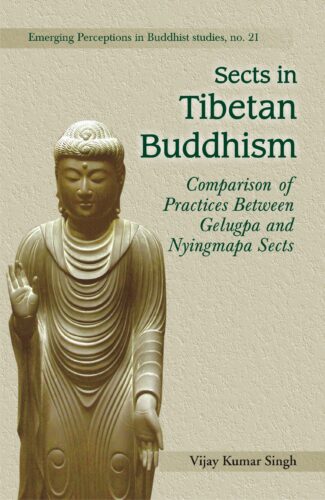
The teachings of Buddha are timeless and priceless and can answer most of the problems that the materialistic world faces today. Nyingma, the first-ever sect of Buddhism in Tibet introduced by Padmasambhava of India, and Gelug, the fourth sect in succession, are dealt with in detail in this book.
The teachings of Buddha are timeless and priceless. The eightfold path as preached by Buddha is still relevant and concurrent with non-violence and compassion in its central point and can answer most of the problems that the materialistic world is facing due to ignorance as its root cause. The Tibetan books were well preserved by the Lamas in their monasteries throughout centuries and in live conditions. India, once the source of religion for Tibet, lost its Buddhist treatises during the past few centuries. Tibetan Buddhist treatises are considered the most authentic source for restoration of Buddhist teaching in the Indian sub-continent. Nyingma, the first ever sect of Buddhism in Tibet was introduced by Padmasambhava of India and still it is in practice. The Gelug sect is the fourth in succession and it claims to have the largest number of followers not only among Tibetans but also popular in the eyes of Western Buddhists, beside others, since more and more Gelug monks are invited to deliver lectures about Buddhism in the West. The responsible factors, inter alia, are perhaps the simplified and elaborate teachings about the altruistic state of mind i.e. Bodhicitta, great compassion, teachings on calming the mind and discerning the real (zhi Nas and Lha Thon) which carry most of the answers to the problems which the world is facing. The present book is an attempt to disseminate the teachings of Buddha from the purest available sources i.e. Buddhism in Tibet. It is a tribute to the peace loving Tibetans who have lost their homeland but still preserve the Buddhist teachings among themselves.
| There are no products |